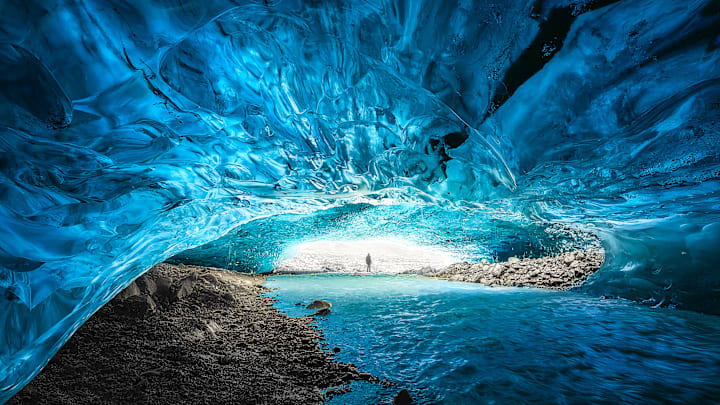United Nations Educational, Scientific and Cultural Organization (UNESCO) Sites are scattered all across the globe. These locations have to be nominated by the country in which they reside to be granted special designation by the UNESCO World Heritage Committee. Over the years, many UNESCO Sites have gained recognition for their natural beauty or their historical and cultural significance.
Places like Machu Picchu, the Taj Mahal, and the Great Barrier Reef have captivated thousands of travelers. But those aren’t the only locations worth visiting. With more than 1200 UNESCO World Heritage Sites around the planet, there are dozens of lesser-known places to explore, including these hidden gems.
- Gracehill Moravian Church Settlements, Northern Ireland
- Iguazu National Park, Argentina
- Greater Blue Mountains Area, Australia
- Miguasha National Park, Québec
- Wadi Al-Hitan (Whale Valley), Egypt
- Bale Mountains National Park, Ethiopia
- Vatnajökull National Park, Iceland
- Great Himalayan National Park, India
- Yakushima, Japan
- Andrefana Dry Forests, Madagascar
Gracehill Moravian Church Settlements, Northern Ireland

You may have heard of the Giant’s Causeway, but Northern Ireland is home to another UNESCO Site that’s just as worthy of a trip. The Moravian concept of an “ideal city” drove the establishment of the Gracehill Moravian Church Settlements in the 18th century. Additional settlements made by the Protestant group can be found in Pennsylvania, Denmark, and Germany, but Northern Ireland’s site is the best preserved. The Georgian architecture of the buildings also gives it a distinct, eye-catching appeal.
Iguazu National Park, Argentina

Iguazu National Park is best known for its Devil’s Throat Waterfall, which stands 260 feet high and spans 8860 feet in diameter. The surrounding rainforest is also home to thousands of plants and animals, including howler monkeys, jaguars, and caymans. While Devil’s Throat is the most famous feature, the park itself has about 250 additional waterfalls
Greater Blue Mountains Area, Australia

Australia’s Greater Blue Mountains cover more than 2.5 million acres of territory, including eight different protected areas. The region is representative of Australia’s biodiversity with a high number of endemic plant and animal species, many of which are threatened. This part of Australia is also home to 985-foot-tall cliffs and an array of slot canyons and waterfalls, making it a stunning natural wonder.
Miguasha National Park, Québec

Miguasha National Park is a paleontological marvel located in southeastern Québec. Widely accepted as the best physical representation of the Devonian Period (or the Age of Fishes), this area hosts five of the six fossil fish groups dating back to the prehistoric era. Miguasha was established as a national park in 1985 and it acquired UNESCO status just 14 years later in 1999.
Wadi Al-Hitan (Whale Valley), Egypt

Like Miguasha National Park, Wadi Al-Hitan earned UNESCO designation because of its fossils. Located in Egypt’s Western Desert, this site contains fossils of an extinct suborder of whales: the Archaeoceti. This region also shows fossil evidence of an important stage of evolution, demonstrating the whales in the final stages before losing their back legs.
Bale Mountains National Park, Ethiopia

Bale Mountains National Park is one of the best places to soak in Ethiopia’s natural scenery, with volcanic peaks, ridges, glacial lakes, and forests. In addition to exhibiting vast amounts of beauty, this area is home to a unique biodiversity system and a water supply that’s vital to millions of people.
Vatnajökull National Park, Iceland

Vatnajökull National Park is huge. It covers roughly 14 percent of Iceland, or about 5400 square miles of land. But it’s not its sheer size that landed it a UNESCO designation. This region contains 10 central volcanoes, and most of them are subglacial. The park’s namesake glacier, Vatnajökull, is the biggest glacier in all of Europe. Not only is this area breathtaking to behold, but it’s also geologically significant; it contains part of the Mid-Atlantic Ridge, which is actively spreading every year due to the tectonic plates that border it.
Great Himalayan National Park, India

Established in 1984, India’s Great Himalayan National Park is best known for its stunning peaks and biodiversity. This park is home to 25 different types of forests and a number of threatened or endangered animal species, including the western tragopan and the cheer pheasant. This site protects a “biodiversity hot spot” and helps to ensure that vital ecological systems remain intact.
Yakushima, Japan

Yakushima is located at the convergence of the palaearctic and oriental biotic regions, and it protects nearly 2000 species and subspecies in the region. Some mountains in the area approach 6500 feet in height. One of the most awe-inspiring features of the UNESCO Site are the old-growth Japanese cedar trees estimated to be more than 1000 years old.
Andrefana Dry Forests, Madagascar

The wilderness of Madagascar has more than lemurs—it’s also home to the Andrefana Dry Forests. The site is famous for its high amounts of endemism, or having many plants and animals in the area that only exist in Madagascar. Some of those species include baobabs (a type of deciduous tree known for its long trunk and high canopy) and flame trees (which are best known for their fiery, red leaves). In addition to hosting unique plants, this region is home to 156 endemic reptiles, 57 endemic mammals, and 34 endemic amphibian species.
Read More Travel Stories:
